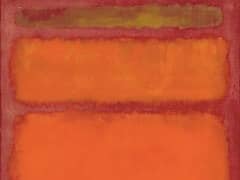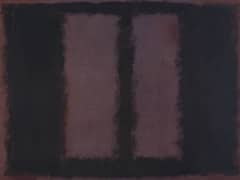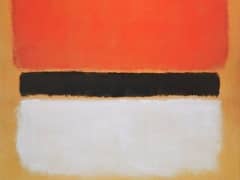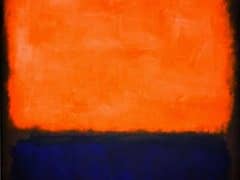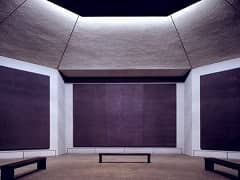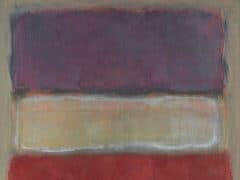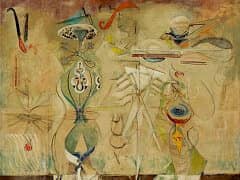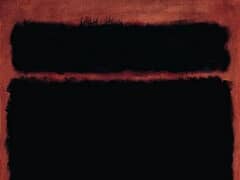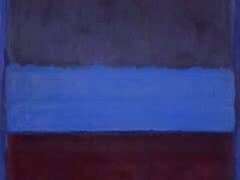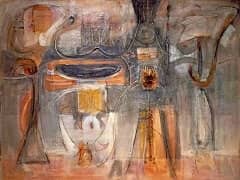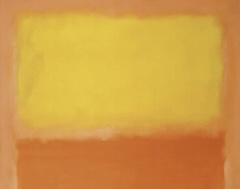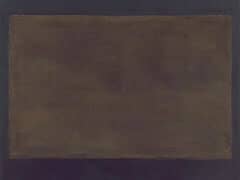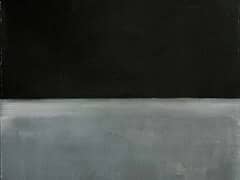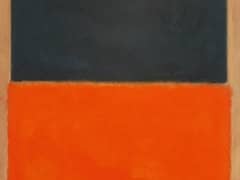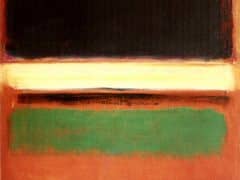White Center (1950) by Mark Rothko
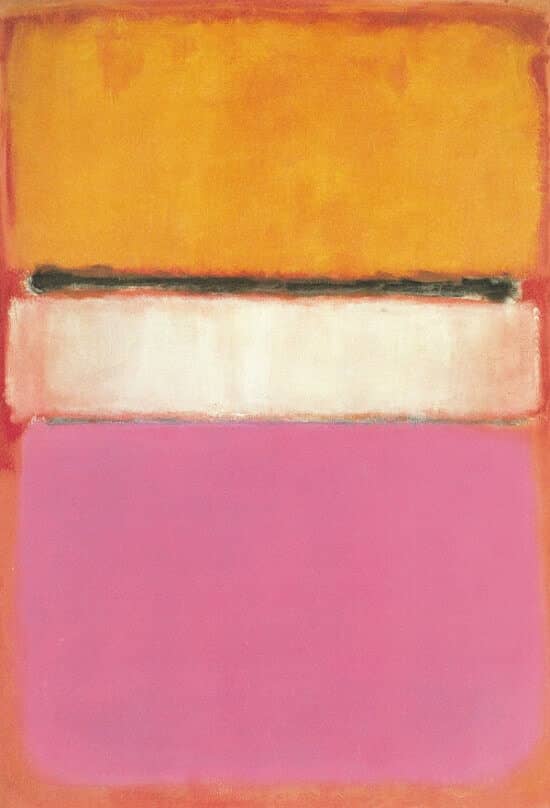
While Jackson Pollock's particular brand of Abstract Expressionism was largely based on the physical gesture, Mark Rothko, like his fellow painters
Willem de Kooning and Max Ernst, depended upon what were referred to as 'fields' of colour, Rothko's mature
works all follow a similar formula: they are large in scale and represent nothing other than pure colour, arranged in floating, horizontal bands whose feathery edges dissolve into the background,
Rothko intended his works to evoke profound, spiritual contemplation in the spectator, their sheer scale occupying the viewer's whole field of vision, whilst the absence of any figuration
resisted the possibilities of narrative reading.
The effect of standing before a Rothko painting is one of feeling dominated, even overwhelmed, by their sheer presence. To accentuate this effect, Rothko frequently produced works in series and
insisted on them being displayed in specific spaces, such as the late series of black and maroon paintings originally intended for the Four Seasons restaurant in New York's Seagram building, and
the works produced for the Rothko Chapel in Houston, Texas,

